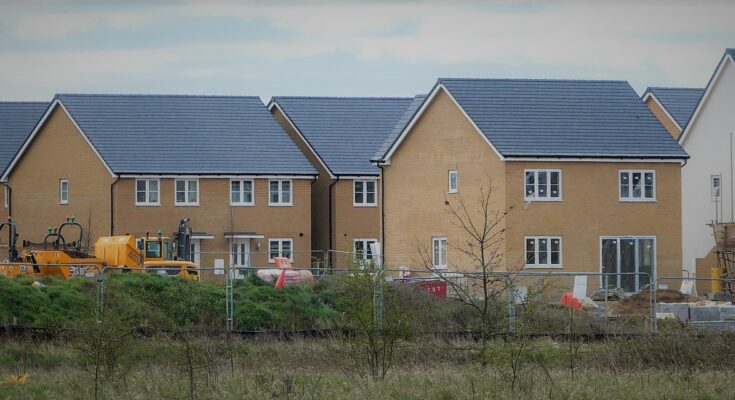Essex Council has projected a pressing need for over 11,076 new homes annually over the next 13 years to address the ever-growing housing demands. However, as of November 2022, only 5,328 houses, apartments, student accommodations, and care homes have been built or planned, representing just over half of the required number.
Essex emerges as a highly promising destination for property investment, particularly alluring to individuals seeking to relocate from London or for London-based commuters.
With London’s ongoing growth, the economy and property market in Essex are poised for expansion, presenting favourable opportunities for property developers and buy-to-let investors.
Leaf Living recently announced a substantial investment exceeding £34 million across two developments in Essex and Hampshire, facilitating the creation of over 100 new Build-to-Rent homes. The Build-to-Rent sector stands as the fastest-growing housing segment in the UK, with private renting households witnessing a remarkable 93% increase. As part of the Gardiners Park Village Development, Leaf Living is set to deliver 68 new homes in Basildon, Essex, through a £22.3 million agreement on the 54-acre site.
Additionally, Strawberry Star secured planning permission in Harlow, Essex, in 2022 for a dedicated Build-to-Rent block comprising 163 residential units, with an estimated gross development value of £45 million. The development encompasses modern amenities such as a digital concierge, maintenance services, parcel storage, flexible co-working spaces, a multi-purpose room, and a shared roof terrace, envisioning a new way of contemporary living.
The significant growth potential of the Build-to-Rent market is evident, with its projected worth expected to reach an astonishing £170 billion by 2032, motivating developers to explore this lucrative investment opportunity. While large-scale Build-to-Rent developments may pose challenges, particularly for new developers, property flips can serve as an advantageous entry point.
A recent survey conducted by Finbri, a property development finance company, revealed that although 45% of property investors expressed an interest in investing in property in 2023, only 8.79% of property flips occurred in the East of England, compared to a higher percentage of 25.27% in London, where properties were renovated and resold. Property flipping, an effective method of reintroducing housing stock into the market, can be pursued by both seasoned and novice investors.
Whether venturing into the realm of Build-to-Rent developments or engaging in swift property flips, Essex presents an opportunity to generate the housing supply necessary to meet the burgeoning demand. With approximately 2.5 million property investors in the UK already benefiting from these opportunities and enjoying stable profits over the past two decades, now may be the opportune time to partake in these lucrative investments.
Property development remains highly appealing to those seeking substantial returns on investment, given the persistent demand from prospective homeowners and property investors that consistently outpaces supply. Engaging in real estate investment can offer two distinct advantages, provided one is willing to embrace calculated risks.
Firstly capital appreciation: The value of your property holdings increases over time. You can realise a substantial financial return by selling your properties individually or as a consolidated portfolio. Suppose your property development strategy involves purchasing a property to renovate or refurbish it and then resell it for a profit. In that case, you may not have to wait an extended period for your capital to appreciate. Buying and quickly reselling a property for a profit is called property flipping. Bridging Market’s 2022 survey shows more than 50% of property flippers generated profits ranging from £10K to £50K, while only a mere 1% incurred losses.
Another aspect to consider is income generation: Opting to retain ownership of your property and lease it to tenants can provide you with a reliable source of revenue. As per a recent study conducted by Finbri, rental rates are escalating across the UK, with certain regions experiencing a staggering 14.6% surge in the year leading up to September 2022. Notably, this growth was observed in something other than London but Northern Ireland.
What are the initial steps to take when venturing into property development?
Maintaining a straightforward and uncomplicated strategy is one practical approach to achieving a profitable margin on your initial property development endeavour.
Undertaking a property development project that is succinct can offer various advantages:
- One of the notable advantages is that it involves less risk.
- It has the potential to generate a profitable return.
- The learning curve is less steep.
- Financing is a more convenient option.
- There is a more significant number of opportunities.
- As a skilled tradesperson, you may be able to perform specific tasks yourself, resulting in lower overall project expenses.
One of the simplest forms of property development is purchasing a property to renovate, either for sale or for rent.
Novice investors are often attracted to run-down, antiquated properties and apartments that require immediate attention and a superficial renovation.
Residential properties are an ideal starting point for those new to property development. This is because they leverage your knowledge of home-buying and renovation without requiring specialised expertise in commercial, storage, office, or student housing markets.
- When engaging in a fix-and-flip project, aiming for a profit margin of at least 20% is advisable to ensure a good return on investment.
- If the profit margin is not satisfactory, consider ending the business deal.
- Your initial profit is determined by your purchase price, which is entirely under your control. However, the market determines the sale price and is not within your control.
Advice from experts for novice developers:
In an open market sale, each asset has a maximum value known as the “ceiling value.” Even with expensive fixtures and finishing touches, the cost won’t exceed the budget limit.
- Consider exploring upcoming neighbourhoods or streets with potential instead of investing in a subpar property located on a popular street.
- Property experts suggest that opting for open-plan living areas could potentially increase the value of your property more than adding an extra room.
- Deciding in advance whether you intend to sell or lease your investment property is advisable. However, it is also recommended to consider the alternative option as a contingency plan in case your primary plan does not come to fruition.
A rental of your investment property
If you do not intend to keep the property, you will probably need to look for a buy-to-let mortgage to finance the purchase unless it requires extensive structural renovations.
The location of your property and the expected rental revenue are essential factors that can impact your development choices. Does this property have sufficient bedrooms for families, young professionals, or students?
Just one tenant, a couple or renting to a family.
For novice investors, the most prevalent choice is to opt for a single lease agreement with one tenant, a couple, or a family.
Your monthly rental income can cover your buy-to-let mortgage payments and any additional administration and maintenance expenses, resulting in a profit for you.
The property has minimal management expenses, as only one tenant can oversee it. Additionally, there is a high likelihood that the tenant will remain for an extended period, providing stability for the property.
Vacancy periods can pose a threat to your annual profitability as your property remains unoccupied and generates no income.
HMOs – homes of multiple occupants
One popular alternative to renting to a single tenant is to convert the property into a House in Multiple Occupation (HMO). This involves renting out individual rooms in the property, with a communal kitchen, living space and bathroom facilities for all tenants.
- Individually negotiated leases.
- There is a chance of a substantial increase in monthly rental income, but it may come with higher expenses for maintenance and management.
- A giant HMO that accommodates five or more separate tenants may yield even greater profitability but require additional management responsibilities. However, it’s worth noting that coordinating necessary upgrades and repairs can be more challenging in this scenario.
- If you have an HMO or Large HMO, you can still receive rental income even if the property is not fully occupied.
- It is important to note that local authorities have specific requirements for planning and building HMOs. Therefore, it is advisable to thoroughly research and understand these requirements before embarking on any HMO project.
Selling the property after renovation is a viable option
Long-term mortgage funding may not be the most suitable option if you plan to sell the property after renovating it. If you decide to pay off your mortgage early, knowing the potential impact of early repayment fees (ERFs) on your overall profit is essential. These fees can significantly reduce the amount of profit you stand to gain.
If you require immediate project funding, you may consider obtaining short-term capital, called bridge financing or bridging loans. These loans offer repayment flexibility, allowing you to repay the loan as soon as your projects are completed.
Achieving success in property investment
To achieve success as a developer, it’s essential to have a thorough understanding of three fundamental phases:
- Sourcing, feasibility and planning.
- Financing and exit strategy.
- Construction, scheduling and project management.
Sourcing, feasibility and planning
When looking for a property, try to locate the greatest price possible and think critically and honestly about its potential. Conduct extensive market research on local house price ceilings, rental rates, and up-and-coming locations – get to know the area you’re considering investing in. Ideally, stick to a place you’re familiar with. Instead of buying the worst property on the nicest street, seek a house on an adjacent street that is more affordable to you and your possible buyer or renter.
The next step is feasibility, which involves determining your proposal’s financial and practical viability. It’s good to test the viability of a few hypothetical projects so that when an opportunity arises, you’ll have the funds to act promptly. Set budgets for each component of the development project and then figure out how to finance it. Answer questions like how much it is and how you will invest it:
- Surveyors’ reports, architect fees, and planning fees
- Deposits for the acquisition of real estate
- Mortgage or bridge finance fees for the remainder of the buying price
- Stamp duty and conveyancing charges
- Costs of construction (trades, supplies, scaffolding, cranes, cherry pickers, and so on).
- Whether you’re selling or renting your home, dressing it with at least basic furnishings will help you financially.
- If you’re selling, throw in estate agent fees and another round of legal fees, and figure out how much personal tax you’ll pay to avoid nasty HMRC surprises.
- If you plan to depart the rental market, consider letting agent costs if you aren’t used to being a landlord.
It is important to note that there are benefits and drawbacks to consider when it comes to tax planning for purchasing a property as an individual versus a property development company. Making informed decisions from the beginning is wise. However, the most suitable option for you is entirely based on your unique situation. It is advisable to consult with a financial expert, such as a financial advisor or accountant, who knows each approach’s current tax and cost implications. This will be a worthwhile investment of both time and money.
Securing financing and developing an exit strategy are essential considerations for any business venture.
Financing and exit strategy
Traditional banks often lack the flexibility to provide funding for projects of this nature, as their lending standards may not align with the specific requirements. Consequently, such banks’ interest rates are likely considerably higher. To ensure optimal loan options tailored to your needs, it is advisable to engage the services of a proficient finance broker who can explore a comprehensive range of possibilities, including private banks that do not typically entertain direct borrower approaches.
Depending on the complexity of the renovation works and the available deposit, it may be necessary to leverage a combination of financial sources. These could encompass buy-to-let mortgages, bridging finance, development finance, or second charges to raise the required capital.
When seeking financing, it is crucial to familiarise yourself with the various options available. Consulting a reputable broker will promptly provide insights into the types of funding accessible, associated costs, and the general lending criteria to be met. The directory of the Association of Bridging Loan Brokers & Lenders offers a reliable selection of reputable bridge finance brokers and lenders.
Additionally, it is imperative to establish a well-defined exit strategy for the project. This strategy will outline how you recover your investment and realise a profit. It may involve selling the property or retaining it as a rental asset while potentially repaying the initial finance through a long-term mortgage.
Construction, scheduling and project management
The successful management of the construction process and adherence to the designated schedule are paramount. It is crucial to remain aware that delays can increase financing costs beyond the allocated budget. When considering the management approach, factors such as hiring a principal contractor, engaging a project manager, or undertaking self-management should be determined based on the project’s scale and your expertise in the relevant trades. It is advisable to avoid taking on more than you can effectively handle. In all cases, careful planning and diligent project management are indispensable for development projects to maintain costs within the established budget.
Thorough planning is essential for every aspect of your development project. Evaluate the required trades and consider the potential for scheduling conflicts caused by on-site overlapping tasks. Additionally, assess the possibility of acquiring additional skills to manage more straightforward trades. By breaking down each project type into a detailed schedule, you can ascertain the estimated duration for each phase.
By considering these factors when setting up your property development project, you can formulate an effective strategy to address the pressing need for housing in Essex, contributing to fulfilling the demand for the missing 52.70% of required housing.




